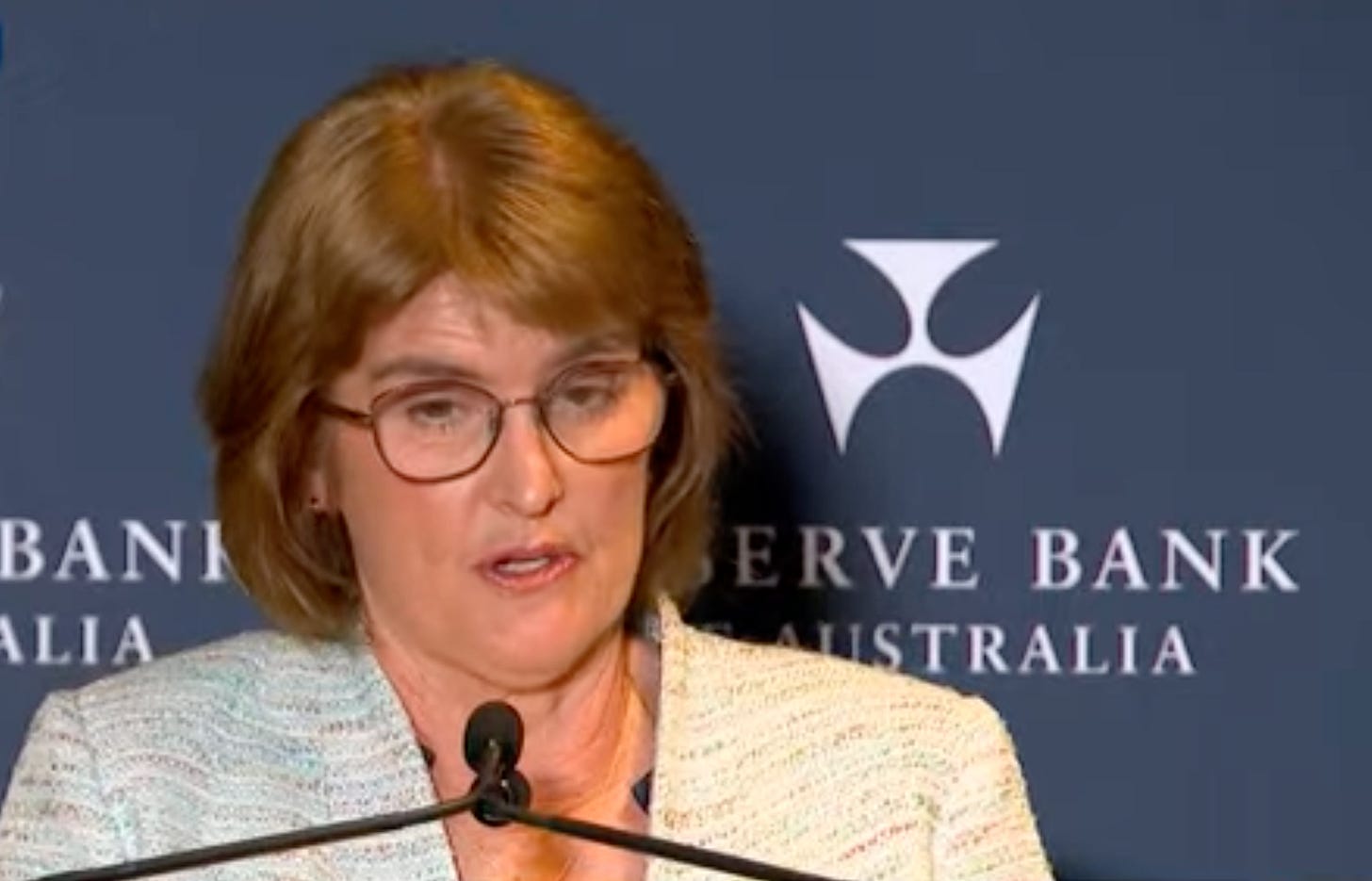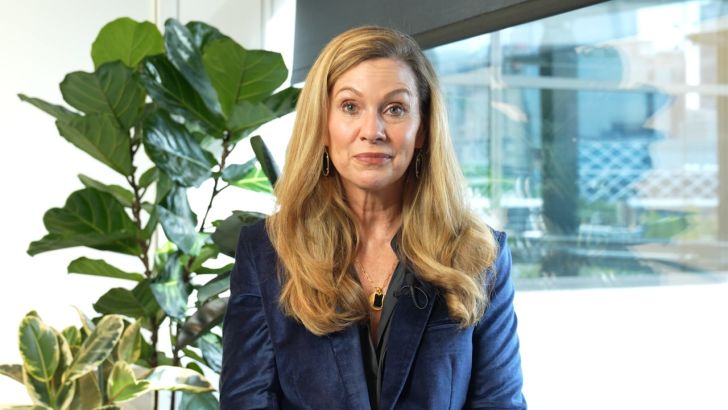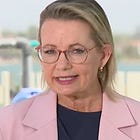This piece is freely available to read. Become a paid subscriber today and help keep Mencari News financially afloat so that we can continue to pay our writers for their insight and expertise.
Today’s Article is brought to you by Empower your podcasting vision with a suite of creative solutions at your fingertips.
The Reserve Bank of Australia kept interest rates on hold at 3.6% on Tuesday, signaling the cycle of rate cuts may be over after inflation surged well above forecasts, dashing hopes among mortgage holders for relief and triggering sharp political debate over who bears responsibility for the economic squeeze.
Governor Michelle Bullock announced the decision following a two-day board meeting, acknowledging that many Australians would have wanted rate relief but explaining that underlying inflation rose 1% in the September quarter — materially higher than the bank’s 0.6% forecast made in August.
“Inflation in the September quarter was higher than we were expecting in our previous forecasts,” Bullock said at a press conference at the Reserve Bank’s Sydney headquarters. “We think some of this was driven by temporary factors such as travel costs, council rates and fuel, and we don’t expect some of these to continue.”
However, the governor warned that more persistent price increases in new dwellings and market services suggest deeper inflationary pressure than previously thought. The bank now forecasts inflation will remain above its 2-3% target band for the next 12 months, with core inflation not returning to the 2.6% midpoint until 2027.
Truth matters. Quality journalism costs.
Your subscription to Mencari directly funds the investigative reporting our democracy needs. For less than a coffee per week, you enable our journalists to uncover stories that powerful interests would rather keep hidden. There is no corporate influence involved. No compromises. Just honest journalism when we need it most.
Not ready to be paid subscribe, but appreciate the newsletter ? Grab us a beer or snag the exclusive ad spot at the top of next week's newsletter.
The decision comes after the Reserve Bank cut rates three times earlier this year from a peak of 4.35%, bringing relief to households struggling with mortgage payments. But the latest inflation data has forced a stark reassessment of monetary policy, with Bullock indicating that less easing may be needed compared to previous economic cycles.
“When combined with the fact that we hadn’t raised rates particularly high, this could mean that less easing in monetary policy is needed in this episode compared to previous ones,” Bullock said, suggesting the bank started cutting from a relatively strong position and may not need to go much lower.
The central bank’s technical assumptions now include only one more rate cut over the forecast horizon, a dramatic scaling back from market expectations just weeks ago. Financial markets had been pricing in multiple cuts, but those bets evaporated following last week’s inflation data showing annual headline inflation at 2.8% and underlying measures remaining sticky.
“It’s possible that there’s no more rate cuts. It’s possible there’s some more. We didn’t go up as high, we might not have to come down as far,” Bullock told reporters, emphasizing the board’s data-dependent approach and cautioning against assuming a predetermined path for monetary policy.
The governor acknowledged competing economic signals, with unemployment rising to 4.1% — higher than expected — while inflation remains elevated. The Reserve Bank judges there is still “a little bit of excess demand in the economy,” which may be manifesting in persistent price pressures despite sluggish economic growth of just 1.8% annually.
“We still think there’s a bit of excess demand in the economy. This may be what is manifested in the inflation data,” Bullock said, while noting the board remains “alert to the risk that we have misjudged the gap between demand and supply in the economy in either direction.”
When pressed on whether the bank considered cutting rates at Tuesday’s meeting, Bullock was unequivocal: “No, we didn’t consider cutting. We basically just talked about holding and the reasons to hold.”
The decision sparked immediate political reaction in Canberra, where Treasurer Jim Chalmers told parliament the outcome was “widely anticipated by markets and widely expected by economists,” while pointing to the government’s record of bringing inflation down from higher levels inherited from the previous coalition government.
“It is the case that inflation is much lower than we inherited from those opposite, and that has given the Reserve Bank the confidence to cut interest rates three times already this year,” Chalmers said in Question Time immediately following the rate announcement. “And those three interest rate cuts do reflect the very substantial progress we’ve made in our economy.”
But Shadow Treasurer Ted O’Brien, the Deputy Leader of the Opposition and Member for Fadden in Queensland, launched a fierce attack on government spending, arguing that fiscal policy is undermining the Reserve Bank’s efforts to control inflation.
“This is the biggest spending government we have had in 40 years outside of a recession,” O’Brien told Sky News in an interview shortly after the rate decision. “It is completely out of control. And the more the government pours money into the economy, it is basically competing with households, businesses, and it is driving prices up.”
O’Brien accused Chalmers of refusing to take responsibility for inflation outcomes, noting the Treasurer claims credit when economic news is positive but avoids media appearances when data deteriorates.
“Over the last few years, what you’ve seen from the Treasurer is every single time there’s good news, he is out there in the media claiming credit. As soon as there’s bad news, so as soon as the inflation figures came out last week, as soon as the interest rate news came out today, he doesn’t go and do media because he knows that the truth is he has to take responsibility and he refuses to do so,” O’Brien said.
Economist Paul Bloxham from HSBC told Skynews interview that Australia’s economy is running up against supply-side constraints, with weak productivity growth limiting the economy’s capacity to expand without generating inflation.
“Nobody is prepared to invest to put in that extra supply that we require because they can’t get a return out of it. Nobody wants to build and construct because they can’t get a return. There is a fundamental problem because we don’t have productivity moving through our economy,” Bloxham said.
He argued that policymakers need to address structural issues including tax system efficiency, energy costs, regulatory burdens, and competition policy to improve productivity and expand the economy’s supply capacity.
“The alternative argument is that the 1.8% growth we’ve seen in the economy over the past year is somehow driving all the pickup in inflation. It’s driving it because demand has run up against supply. But that’s substandard growth. If we got growth at 3%, inflation would be much, much higher than that,” Bloxham explained.
The Reserve Bank will begin receiving monthly consumer price index data starting next month, providing more frequent signals about inflation trends, though Bullock cautioned the data would be volatile and affected by seasonal factors.
For Australian households, the rate hold means continued pressure on family budgets, with mortgage payments remaining elevated and no near-term relief in sight. A typical household with a $500,000 mortgage is paying approximately $800 more per month compared to when rates were at historic lows during the pandemic.
The central bank’s next board meeting is scheduled for December, though economists widely expect rates to remain unchanged barring a dramatic shift in economic conditions. The bank’s forecasts show inflation gradually moderating through 2026 and 2027, but the path remains highly uncertain.
“The board will remain cautious, driven by what the incoming data tell us about the outlook,” Bullock said, emphasizing that forecasts are inherently uncertain and the further ahead they project, the less reliable they become.
The decision highlights the difficult balancing act facing central banks globally as they attempt to bring inflation under control without triggering sharp rises in unemployment — a trade-off that has historically proven challenging but which Australia has so far managed better than many comparable economies.
Sustaining Mencari Requires Your Support
Independent journalism costs money. Help us continue delivering in-depth investigations and unfiltered commentary on the world's real stories. Your financial contribution enables thorough investigative work and thoughtful analysis, all supported by a dedicated community committed to accuracy and transparency.
Subscribe today to unlock our full archive of investigative reporting and fearless analysis. Subscribing to independent media outlets represents more than just information consumption—it embodies a commitment to factual reporting.
As well as knowing you’re keeping Mencari (Australia) alive, you’ll also get:
Get breaking news AS IT HAPPENS - Gain instant access to our real-time coverage and analysis when major stories break, keeping you ahead of the curve
Unlock our COMPLETE content library - Enjoy unlimited access to every newsletter, podcast episode, and exclusive archive—all seamlessly available in your favorite podcast apps.
Join the conversation that matters - Be part of our vibrant community with full commenting privileges on all content, directly supporting The Evening Post (Australia)
Catch up on some of Mencari’s recent stories:
It only takes a minute to help us investigate fearlessly and expose lies and wrongdoing to hold power accountable. Thanks!










